Federal COVID-19 aid averted financial disaster for many North Carolina families
New data released last week from the U.S. Census Bureau’s Current Population Survey and American Community Survey (ACS) point to the critical impact that federal relief had on the well-being of children and families in 2021.
Based on the ACS, the overall poverty rate in North Carolina was 13.4 percent in 2021, showing no significant change from 2019. (Data for 2020 isn’t available due to problems with data collection during the height of the pandemic.) The child poverty rate in our state did show a significant improvement, dropping from 19.3 percent in 2019 to 17.8 percent in 2021. This means about 30,000 fewer North Carolina children are living in poverty in 2021 compared to 2019, which is absolutely something to celebrate. The data also show a small increase in average income for North Carolinians: Median household income in 2021 was about $62,000, up $1,200 from 2019.
But the official state-level poverty measures in the ACS don’t tell the full story of the impact of public policy on poverty. Except for expanded unemployment insurance payments, these measures don’t directly capture the impact of most federal relief programs — or the state programs made possible with federal funds. The fact that the topline poverty rate in North Carolina did not worsen in 2021 likely points to the impact of federal relief on a fast economic recovery overall, and the benefits that families saw through employment and pay.
Data that includes federal assistance makes the impact of COVID-aid even clearer
For a more complete picture of how federal policy boosted family well-being during the pandemic, we can look to the Supplemental Poverty Measure (SPM) findings from the Current Population Survey. The SPM is a more robust measure of poverty that captures income supports like tax credits and stimulus payments as well as non-cash benefits like housing and food assistance, along with tax payments and medical expenses not included in the official poverty measure. At the state level this data is only available in three-year averages, but the data for North Carolina for 2019-2021 shows a steep decline compared to previous years. The SPM rate for 2019-2021 was 9.9 percent, compared to 13.1 percent for 2017-2019, a decline of over 3 percentage points. This remarkable progress is due to temporary federal funding to support low-income families during the pandemic, like the expanded Child Tax Credit, stimulus payments, and housing assistance.
Using the SPM to examine the number of people in poverty in North Carolina, data shows that the average number of people living in poverty from 2019-2021 was about 1.3 million, the lowest number in the past decade. This is especially notable, since North Carolina’s population has grown markedly over this time period, and again this is a testament to federal policies that supported families during the pandemic.
National SPM data highlights the crucial importance of temporary expansions to the Child Tax Credit (CTC) in particular. In the United States as a whole, child poverty according to the SPM reached a record low of 5.2 percent in 2021, compared to 9.7 percent in 2020. This is not only the steepest year-over-year decline on record, but also the lowest child poverty rate on record since 1967. The CTC accounted for the largest part of this progress, keeping over 2 million children out of poverty in 2021. Families’ most common use of CTC payments was for basic needs like food, housing costs, and clothing.
We can build on policy successes to close racial poverty gaps
National SPM data also point to the power of federal investments to tackle racial inequities, with the biggest decreases in poverty from 2020 to 2021 seen among Black and Latino people. But nationally as well as in North Carolina, stark racial inequities persist. The 2021 ACS data for North Carolina shows that racial disparities in the poverty rate are essentially unchanged from recent years, with Black, Latino, and American Indian people still far more to be living in poverty than their white and Asian peers. These data point to structural inequities like occupational segregation, racial wage gaps, and uneven access to high-quality jobs.
Policymakers have the power to tackle these inequities with anti-racist policies that will benefit all North Carolinians, including state tax credits for working families, expanded child care assistance that gives parents the opportunity to work, and robust funding for education and workforce development that provide a pathway to high-quality jobs.
As a whole, these new data show the crucial impact of the federal government stepping up to help families facing a generational crisis. Lifelines like the expanded Child Tax Credit, stimulus checks, supplemental Unemployment Insurance payments, rental assistance, and other aid averted financial disaster for many North Carolinians and showed the power of public policy to tackle poverty. But the temporary nature of these programs means that we’re likely to see poverty grow in North Carolina communities now that federal assistance has largely dried up. We’ve already seen monthly child poverty rates grow at the national level since advance Child Tax Credit payments ended at the end of 2021.
We also know that many North Carolinians still can’t work because they lack child care, and many peoples’ wages have not kept up with the cost of basic necessities like food, gas, and housing. These issues could get even worse if Federal Reserve efforts to reduce inflation result in a recession.
Overall, these data show that federal and state investments shielded many North Carolina families from severe hardship and helped shorten the country’s economic crisis. The task now is for policy makers at the state and federal apply that lesson to how we rebuild from this experience.



